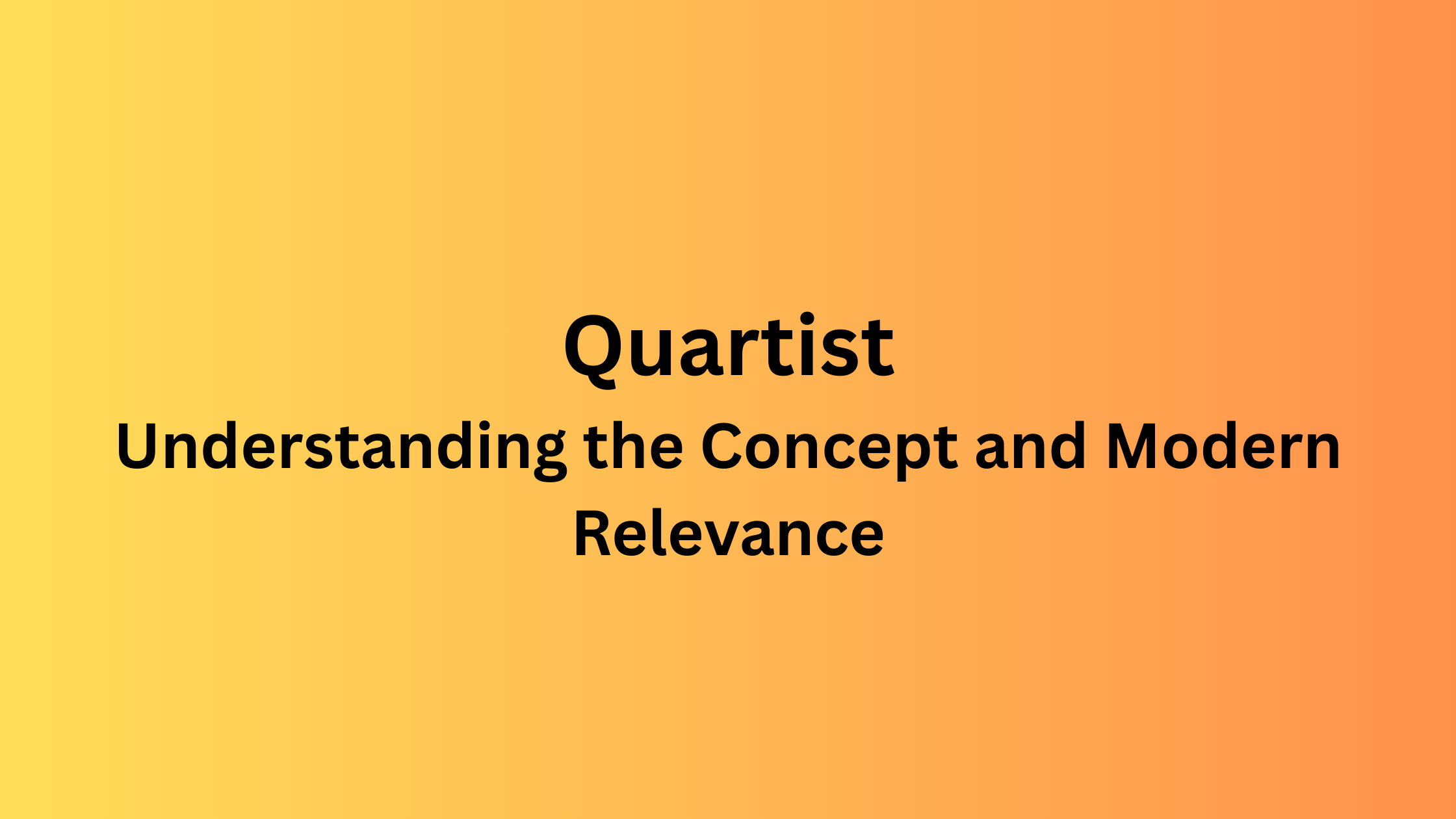The term Quartist is becoming increasingly visible across creative, cultural, and digital landscapes. Although it may sound abstract, the idea behind Quartist reflects the blending of art, technology, and individual expression. It is a modern term that can describe both a movement and an identity, especially in how people see themselves as creators in a fast-changing digital age. This article explores what Quartist means, where it comes from, and how it applies to fields like design, entertainment, and innovation.
What is a Quartist?
A Quartist is generally understood as a person or movement that combines art with other disciplines such as technology, storytelling, or social commentary. Unlike traditional artists, a Quartist often works across multiple mediums and platforms, experimenting with new forms of creativity.
Origins of the Term
The word appears to come from a mix of “quart” (suggesting four or multiple dimensions) and “artist,” hinting at multidimensional creativity. Some sources link it to contemporary art movements where artists reject singular definitions and instead embrace cross-disciplinary roles.
Characteristics of a Quartist
- Works across visual, digital, and performance art
- Blends traditional creativity with modern technology
- Challenges conventional boundaries in art and culture
- Focuses on unique self-expression and storytelling
Quartist in Digital Media
In the digital age, many Quartists thrive online. Social platforms, NFT marketplaces, and virtual galleries provide space for creative people to showcase interactive and multimedia work.
Quartist in Music and Performance
Musicians who mix genres, use AI tools for composition, or blend live performance with digital visuals can also be described as Quartists. Their art pushes beyond sound into immersive experiences.
Quartist and Technology
A strong link exists between Quartists and technology. From AI-driven paintings to VR-based installations, these creators embrace tools that enhance their ability to experiment and reach new audiences.
Quartist in Fashion and Design
Fashion designers who merge traditional craftsmanship with digital design tools or sustainable innovation often reflect the Quartist mindset, bringing together creativity, ethics, and technology.
Quartist as a Social Commentator
Many Quartists use their art to highlight social issues. Whether it is climate change, mental health, or inequality, their multidimensional approach allows them to amplify important conversations.
Quartist in Education and Learning
Educators adopting creative teaching styles, using gamification, or combining art with STEM subjects can also embody Quartist principles, showing how learning can become more engaging and inclusive.
Benefits
- Freedom to explore multiple creative outlets
- Stronger personal brand identity in a competitive world
- Ability to adapt to rapid cultural and technological shifts
- Wider audience reach across different platforms
Challenges Quartists Face
- Difficulty in being recognized within traditional systems
- Struggles with monetizing cross-disciplinary work
- Balancing creativity with commercial expectations
- Navigating copyright and ownership in digital art
Famous Examples
While not always labeled as Quartists, figures like multimedia performers, digital art pioneers, and cross-genre musicians embody the spirit of the movement. Examples include artists creating AI-generated installations or musicians who combine visual storytelling with sound.
The Future of Quartist Culture
As society moves towards the metaverse, Web3, and AI-driven creativity, Quartists are likely to play an even greater role. They will shape how art, culture, and identity are defined in a global, connected world.
Why Quartist Matters Today
The importance of Quartist lies in its encouragement of versatility. In a world where jobs, identities, and industries are blending, being able to think and act like a Quartist provides resilience and relevance.
FAQs
Q1: What does Quartist mean?
It refers to a person or cultural trend that combines art with other disciplines like technology, design, or social commentary.
Q2: Is Quartist a new movement?
Yes, it is a relatively new concept, shaped by digital culture and cross-disciplinary creativity.
Q3: Can anyone be a Quartist?
Yes, anyone who combines creative expression with multiple mediums or fields can embody the Quartist spirit.
Q4: How does technology influence Quartists?
Technology provides new platforms and tools, allowing Quartists to experiment with AI, VR, and digital art.
Q5: What is the future of Quartist culture?
It is expected to grow with the expansion of digital spaces, offering even more opportunities for multidimensional creativity.
Conclusion
The concept of Quartist highlights a new way of understanding creativity in the 21st century. It celebrates the merging of art with technology, culture, and social engagement. Quartists challenge traditional boundaries, experiment with new ideas, and open doors for diverse ways of expression. As the world continues to embrace digital transformation, being a Quartist may no longer be a niche identity but a necessary approach to thriving in the modern creative landscape.

